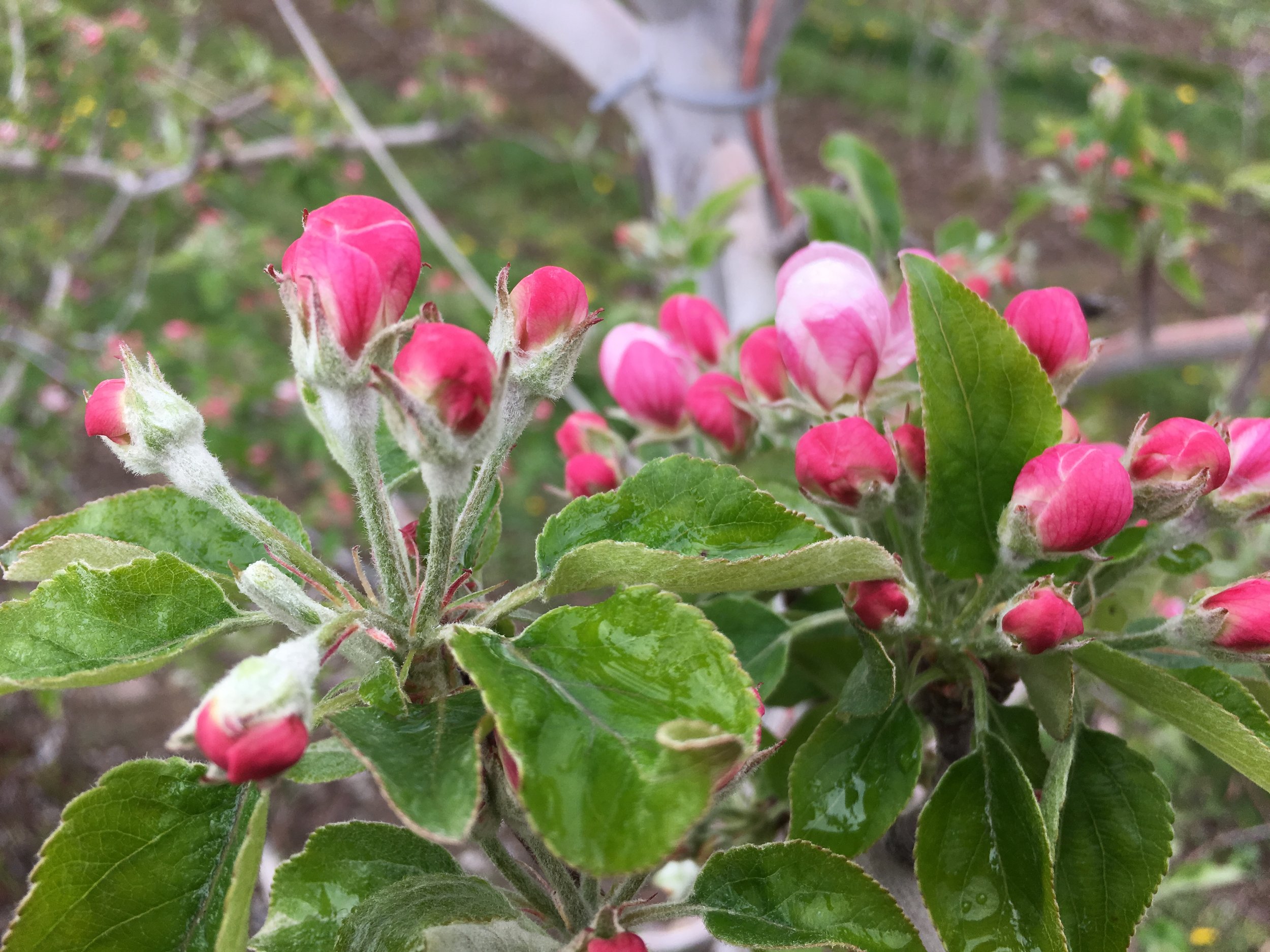Crop load & return bloom
This past week, at the Yakima Pomology club meeting, the topic was chemical thinning for apples. The discussion began with a treatment scenario of a Honeycrisp orchard that produced 80 bins per acre last season and 40 bins per acre in the year prior. This presented a textbook example of alternate-bearing in a variety that is prone to that condition. The chemical thinning activities directly affect a plant’s alternate bearing and poor return bloom responses, which are both real concerns for growers.
The big takeaway of the night for me was the timing of Bud Development activity on the “on-year” versus the “off-year” and what can be done about it. The point being, there are some things that can be done at this stage with your Nutrient Management Plan to complement Bud Development.
Consider that successful Bud Development is a result of adequate carbohydrate supply. Carbohydrates are the energy source that powers plant activities during the growing season. In the early growth and development stages (i.e. late winter, early spring), needed energy supply comes from plant stored carbohydrate reserves. These stored reserves are required for plant support until the canopy is photosynthetically active and the soil temperature warms enough for nutrient release to begin for plant root uptake (usually around 68°F). This can vary by growing region, but a significant number of critical stages of plant development can occur before the soil warms and the plant canopy is active. This puts a significant dependence upon the plant stored reserves being adequate to supply the plant’s nutrient and energy demands. This can include energy supply for dormancy, canopy development, blooming (pollination, pollen tube elongation and fertilization), crop retention, cell division, rootflush, etc. The point here is that energy is foundationally important in early stages of development.
Early on and during the growing season, the plant doesn’t care where the energy supply comes from so long as it isn’t deficient. Deficiencies in energy or nutrients cause the plant to self-regulate. Fortifying plants with foliar nutrients and energy sources can reduce the deficiency-risk and improve not only canopy development but also Bloom activities, when applied early. In addition to improving pollination, pollen tube elongation and fertilization activities, foliar nutrients can also improve crop retention. When plant stored reserves are not adequate for plant needs, it must self-regulate to reduce energy and nutrient demands.
This is when supplementing plants with “plant-ready” nutrients and energy sources is a good practice. Fortifying plants (before they are stressed) helps them to be better equipped for early growth and development. With some varieties, bud development happens a few weeks after Full Bloom. Any deficiencies at this stage can cause the plant to self-regulate at your detriment. Applying the right foliar nutrients early is much like an insurance policy for your plants' bloom preparedness.
The unspoken message I heard at the Pom club meeting was how important adequate carbohydrate supply is for improving the plants ability to manage the high energy demands of postbloom activities; i.e. cell division, crop retention, bud development, etc. However, it needs to be in the proper forms to be effective.
“Plant-ready” nutrients and low-molecular weight organic acids (LMWOA) are not new technology. LMWOA aren’t humic acid or fulvic acid, but they are carbon-based. Humic and fulvic acid are large molecules in comparison to lactic, citric, malic, gluconic acids, etc. Due to their small physical size, LMWOA are ideal as complexing and chelating agents for “plant-ready” nutrients like orthophosphate.
In spring, when so many important plant growth and development stages are happening, being deficient in nutrients or energy is not a viable option. Each of these early stages are timing-intensive and temperature-driven. This means if there is any deficiency (nutrient or energy) during a critical stage of development, it limits the potential and moves into the next development stage in its now ‘limited condition’. This could be in Bud Development, Cell Division, Crop Retention, Canopy Health, etc. Realize that when there is a deficiency, the parent-plant will prioritize the current generation over the next generation. When stressed in a deficient state, the parent-plant self-regulates at your peril. This is why it’s a good practice to fortify ahead of the upcoming (known or unknown) event. Don’t wait for a stress event to materialize, rather treat it in expectation of it to reduce the negative impact. Being proactive is a better approach than waiting and reacting after the fact. For example, by treating proactively, with Best Management Practices, you empower plants to adjust in advance so as to lessen the adverse effects stress can have on plants (and crops) at critical stages of development, like cell division and bud development..
I recommend that growers foliar apply SunBar BlümCet (pronounced Bloom-set) and HPF25. They are a powerful, “plant-ready” combination. Together they supply needed nutrients with LMWOA and are a preemptive strike at Bloom stage, when blossoms need fortifying to ensure they have the necessary energy supply to be more radiant and attractive to pollinators. Foliar-feeding with BlümCet and HPF25, fortifies and supplements plant reproductive parts, improving their viability and uniformity of blooming activities. A tighter bloom window leads to a tighter harvest window, in order to reduce harvest costs.
It doesn’t matter the crop, at bloom stage, all plants need adequate energy and nutrient supply to perform up to their potential. Deficiencies at this stage limit yield potential and your bottom line. SunBar Plant Nutrition specialized formulations are designed to improve plant productivity, pollen-performance and crop quality. Call me for more information on how you can include SunBar BlümCet and HPF25 in your Nutrient Management Plan.
Here’s to your crops’ success!


